Aircraft Aerodynamics with AVL - Aerodynamic Decelerator Systems Laboratory
Aircraft Aerodynamics with AVL
Another tool to evaluate aerodynamic and control derivatives of UAS is Athena Vortex Lattice (AVL) developed by Mark Drela at MIT. Cloud Cap Technology (CCT) adapted this tool adding a user-friendly AVL Editor to it. CTT also modified AVL to output data as an Extensible Markup Language (XML) file containing the resulting aerodynamic and stability derivatives in a format immediately applicable to be used in software-in-the-loop and hardware-in-the-loop simulations. As such the AVL software became the cornerstone of developing models for Piccolo autopilot and cannot possibly be avoided.
Figure H shows an example of using AVL Editor to create a model of fuselage (as a solid of revolution), and Fig.I – aerodynamic and control surfaces. While defining surfaces the user can either choose one of the NACA’s airfoils from the data base or create a new one by defining the upper and lower surfaces of airfoil counterclockwise starting from the trailing edge (Fig.J).
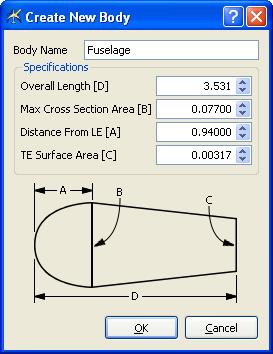
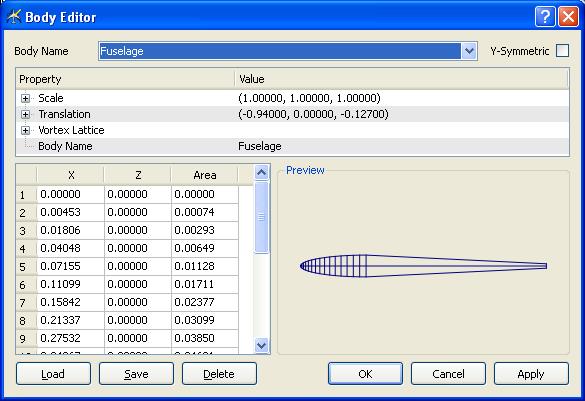
Figure H. Defining a fuselage.
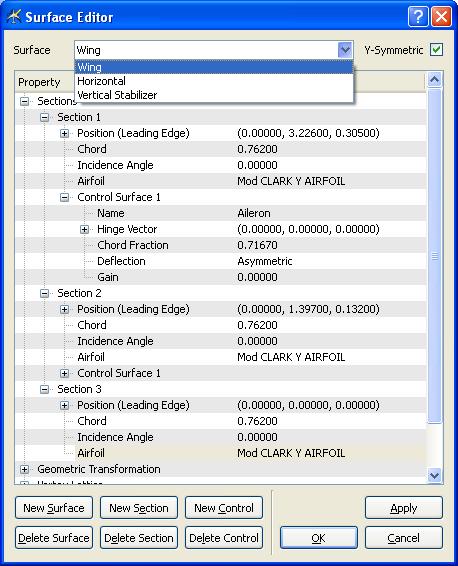
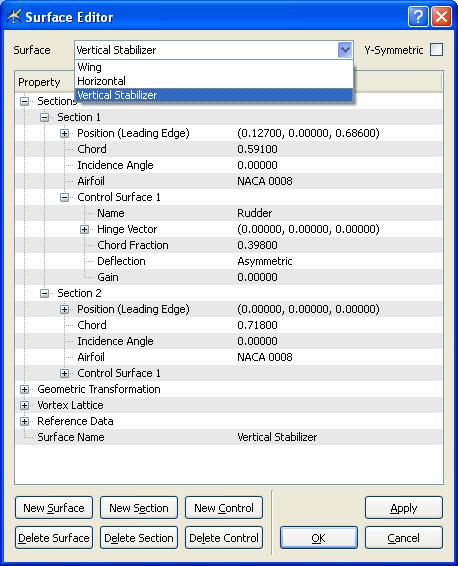
Figure I. Defining aerodynamic and control surfaces.

Figure J. Defining a non-NACA airfoil.
The model created in AVL Editor can be visualized (Fig.K) and is stored as a description file in the XML format.
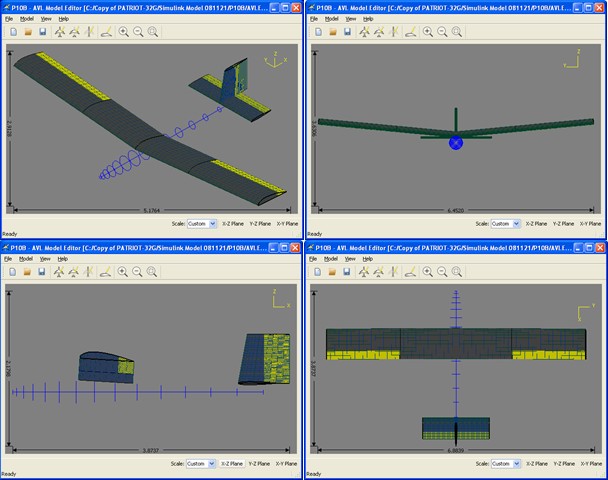
Figure K. The complete AVL model of P10B.
The next step is to execute an angle of attack sweep (Fig.L), which results in an output shown in Fig.M. These results are also saved / linked to the AVL description file. Figure N provides an example of defining the aerodynamic drag polar and slope of the lift curve, parameters that will show up and be explicitly used in a Piccolo Command Center setup.
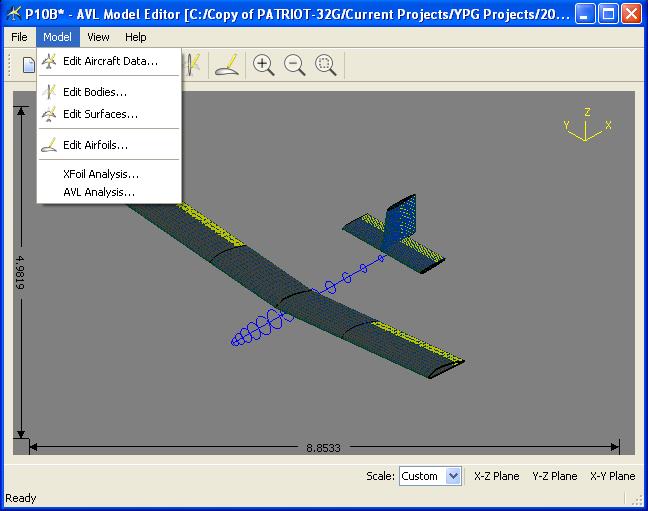
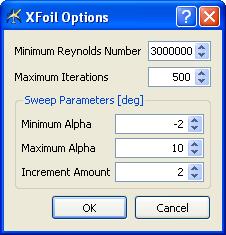
Figure L. Choosing the XFoil Analysis option in AVL Editor (a) and setting XFoil options (b).
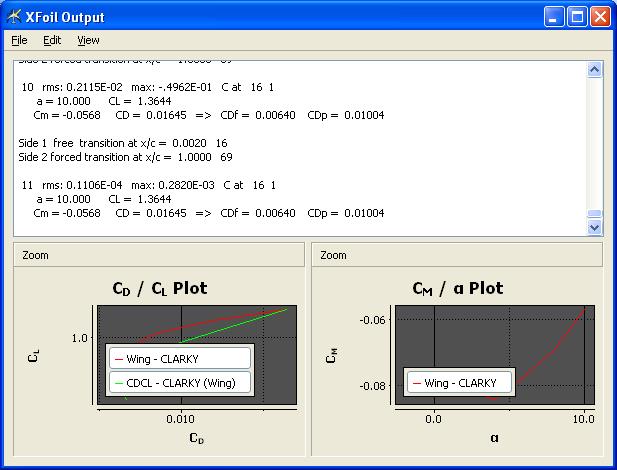
Figure M. Example of the alpha sweep output.
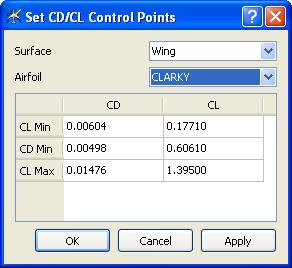
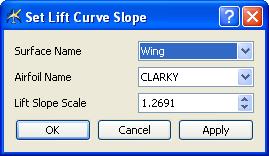
Figure N. Proposed inputs to the AVL description file as a result of XFoil analysis.
It should be noted that compared to LinAir, CCT AVL seems to have a limited capability (and more difficult to tune). LinAir software package allows computing all aerodynamic and controls coefficients and therefore create a full model of an airplane, while AVL computes parameters based on the alpha sweep only.
Modeling also involves developing a model for the engine and propeller. Figure O shows examples of the model for a 22 hp engine (Fig.Oa) and 3W 240cc engine (Fig.Ob).
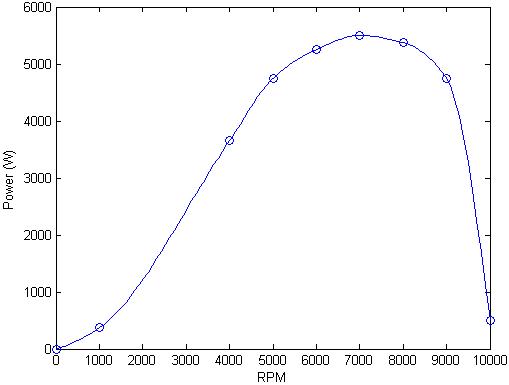
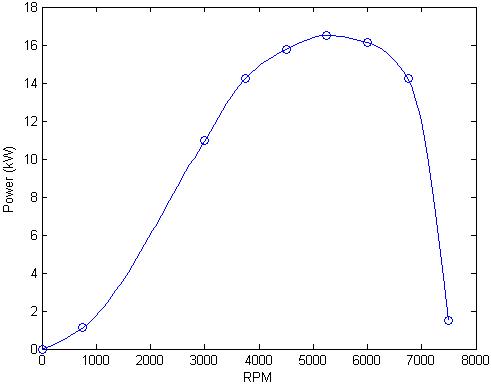
Figure O. Engine models.
As a result, a complete set of the aircraft model files to be further used with the Piccolo autopilot includes
- AlphaSweep.xml file defining aircraft aerodynamics
- Engine.lut file defining an engine
- Propeller.prd file defining a propeller, and
- AVL.txt description file that glues everything together

